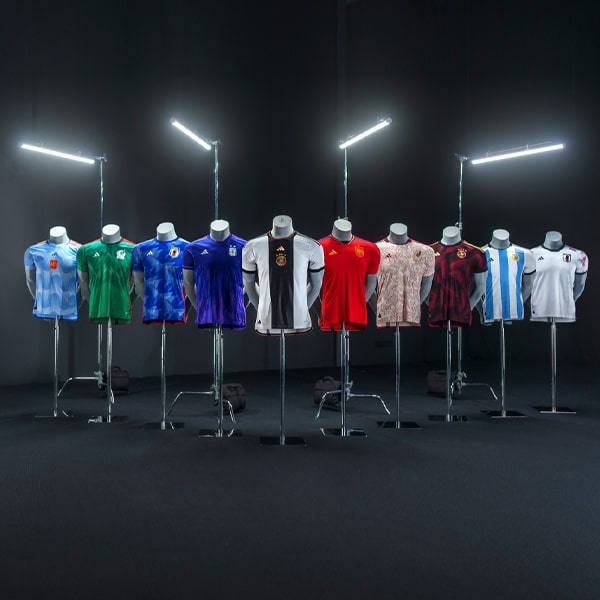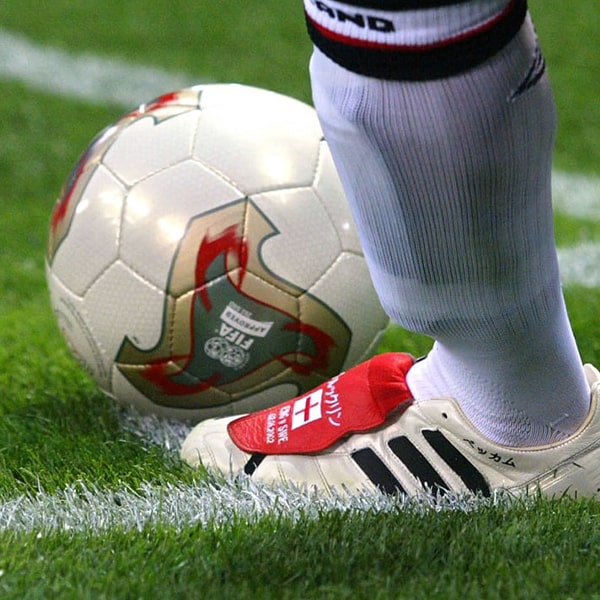Retrospect: adidas World Cup Balls
Retrospect: adidas World Cup Balls
Ahead of the Brazuca reveal we take a look back at the history of adidas World Cup balls. 

Ahead of the launch of the 2014 World Cup ball - the adidas Brazuca, we're taking a look back at all 11 previous adidas World Cup balls from the Telstar Mexico in 1970 to the Jabulani used in South Africa in 2010.
Tournament after tournament adidas have produced the iconic match ball for the world's biggest sporting competition. The famous adidas logo has featured on the World Cup match ball for 44 years with the brand introducing new technology and designs as history is made and as players become legends.
Telstar Mexico | Mexico 1970 - The first adidas ball to feature in a World cup came in the shape of the Telstar Mexico in 1970, the first ball designed with 32 black and white panels. The traditional approach was adopted by adidas so the ball was more visible on black and white televisions, as the 1970 World Cup was the first to be broadcasted live on television. Hence the name Telstar - Television Star.

Telstar Durlast | West Germany 1974 - For the 1974 World Cup in West Germany adidas repeated the design of the Telstar but incorporated some subtle visual changes. Changing the lettering on the ball to black gave the brand more identity and using the same ball in successive World Cups resulted in the Telstar becoming the ball of an era for many players and fans and is the sole reason why a typical football is always portrayed as black and white. 
Tango Rosario | Argentina 1978 - 1978 saw the arrival of the legendary Tango ball. Re-designed with twenty panels, the Tango featured the same pattern on each panel to create 7 circles, a design that would remain on the World Cup ball for 20 years. As with all of adidas' official World Cup balls at the time the Tango was made of genuine leather finished with shiny waterproofing durlast coating to maintain durability. 
Tango Espana | Spain 1982 - The 1982 World Cup in Spain marked the last ever fully leather adidas World Cup ball. The Three Stripes had introduced a ball featuring rubber on the seams to prevent water retention and to therefore stop the ball becoming heavier in wet weather. Italy's Paolo Rossi notched 6 goals with the Tango Espana, including a hat trick against Brazil, to pick up the Golden Boot as his country became world champions.
Azteca Mexico | Mexico 1986 - The Azteca Mexico was the official match ball of 1986 FIFA World Cup in Mexico. The first fully synthetic and rain resistant FIFA World Cup ball, the Azteca took on a more adventurous patterned design with red lettering inspired by the hosting nation s native Aztec architecture and murals. 
Ertusco Unico | Italy 1990 - The first world cup of the 1990's produced the new Etrusco Unico ball, the official match ball of the 1990 FIFA World Cup in Italy and the Euro 1992 in Sweden. The name and intricate design took their inspiration from Italy s ancient history and the fine art of the Etruscans. Three Etruscan lion heads were placed on each of the 20 triads and the ball was lighter and faster than ever. A heart breaking campaign for England but one of glory for adidas' homeland of Germany.
Questra | USA 1994 - The official ball of the 1994 World Cup was manufactured from five different materials and enveloped in a layer of polystyrene foam to further improve water resistance and allowing greater acceleration when struck. Questra, meaning "the quest for the stars" was adidas' lightest and most responsive ball yet. The last of the classic black and white design.
Tricolore | France 1998 - France '98 saw the introduction of a landmark World Cup ball. The adidas Tricolore was the first multi-coloured ball to be used in the finals and the last ball to feature the tango design introduced in 1978. The blue design was to represent the colours of the French national team and rewrote the rule book when it came to adidas World Cup ball design.
Fevernova | Japan/South Korea 2002 - The first World Cup of the 21st century was held in South Korea and Japan in 2002 and adidas created a new ball made up of thicker inner layers to increase the accuracy of the ball in flight. In a break from tradition adidas retired the Tango pattern and opted for a more revolutionary look based on Asian culture.
+Teamgeist | Germany 2006 - The Teamgeist ball was designed by the adidas Innovation Team with just 14 curved panels. The panels were bonded together rather than stitched with the idea that the ball would be rounder and perform regardless of where it was struck. For the first time ever adidas personalised each ball with the team names, stadium, date and KO time and supplied a one off gold ball for the final. 
Jabulani | South Africa 2010 - The Jabulani was the ball of the 2010 World Cup which translated as to celebrate in isiZulu. The South African inspired design featured a newly developed Grip n Groove profile to provide an exceptionally stable flight and perfect grip under all conditions. Eight thermally bonded 3-D panels were moulded together to ensure the ball was perfectly round and more accurate than ever before.
Stay tuned for the official Brazuca 2014 reveal. Have you got a favourite adidas World Cup ball? Let us know. You can purchase all 11 adidas World Cup balls from selected online stockists including Pro-Direct Soccer.







